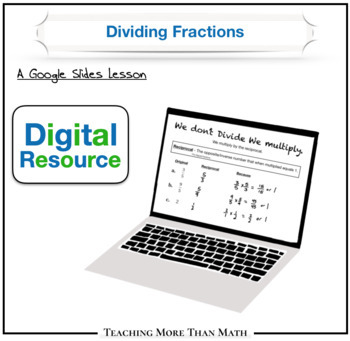Dividing Fractions Google Slides Lesson for Nearpod, Pear Deck, Seesaw & more.
- Google Slides™

Description
This is a digital product: you will receive a copy of a Google Slide lesson.
Move through this engaging Google Slide lesson that guides students on how to divide fractions. First students will learn how to divide fractions with fractions. Students will then learn how to model whole numbers divided by fractions and how to work through fraction and whole number division. Finally students will learn and practice evaluating expressions with fraction division using order of operation.
Students are challenged and engaged with practice slides. These practice slides need to be assigned through your preferred method (Nearpod, Pear Deck, Seesaw, Google Classroom). Practice slides say "try it on your own."
This lesson is designed to be used over multiple days. Teachers should have knowledge on how to use, edit, and present with Google Slides. This lesson can be duplicated and shortened for use over 2 or more days.
Teacher slides require the capability to draw on screen to demonstrate the skills during live





